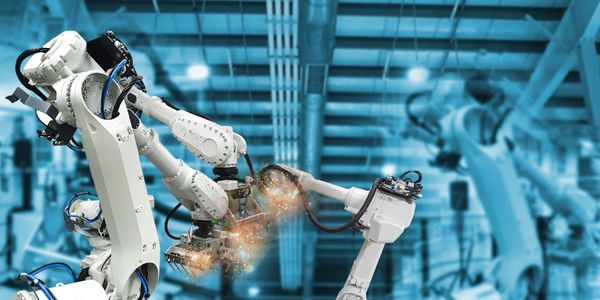Download PDF
Gaining control over the “black art” of NC programming
Technology Category
- Functional Applications - Manufacturing Execution Systems (MES)
- Functional Applications - Product Lifecycle Management Systems (PLM)
Applicable Industries
- Equipment & Machinery
Applicable Functions
- Product Research & Development
Use Cases
- Factory Operations Visibility & Intelligence
- Manufacturing System Automation
- Predictive Maintenance
Services
- Software Design & Engineering Services
- System Integration
The Challenge
Demag Delaval Industrial Turbomachinery’s Lincoln site faced a significant bottleneck in NC programming, which was a time-consuming process requiring highly trained engineers. This bottleneck was critical as it affected the delivery speed of their gas turbine engines. Management aimed to accelerate the NC programming process and reduce dependency on specialists to improve competitiveness and eliminate non-value-added processes.
About The Customer
Demag Delaval Industrial Turbomachinery Limited, a wholly owned subsidiary of Siemens, is a full-service provider of power systems, equipment, and services. The company’s Lincoln site specializes in the production of industrial gas turbines. As a subsidiary of Siemens, Demag Delaval benefits from advanced technological support and resources, allowing it to focus on continuous improvement and cost reduction in its manufacturing processes. The company has a strong emphasis on leveraging technology to streamline operations and enhance productivity.
The Solution
The adoption of NX CAM software provided a solution to the NC programming bottleneck. NX CAM, with its built-in knowledge capture technology, allowed the company to incorporate its manufacturing know-how and industry best practices into the CAM system. This information was reused in the form of manufacturing templates and process assistants. Templates captured the specifics of machining processes, while process assistants automated NC programming further by guiding programmers through the steps involved in creating an NC program. This approach significantly reduced the learning curve for new NC programmers and standardized operations, making the process more efficient and less dependent on specialists.
Operational Impact
Quantitative Benefit
Related Case Studies.

Case Study
Smart Water Filtration Systems
Before working with Ayla Networks, Ozner was already using cloud connectivity to identify and solve water-filtration system malfunctions as well as to monitor filter cartridges for replacements.But, in June 2015, Ozner executives talked with Ayla about how the company might further improve its water systems with IoT technology. They liked what they heard from Ayla, but the executives needed to be sure that Ayla’s Agile IoT Platform provided the security and reliability Ozner required.

Case Study
IoT enabled Fleet Management with MindSphere
In view of growing competition, Gämmerler had a strong need to remain competitive via process optimization, reliability and gentle handling of printed products, even at highest press speeds. In addition, a digitalization initiative also included developing a key differentiation via data-driven services offers.

Case Study
Predictive Maintenance for Industrial Chillers
For global leaders in the industrial chiller manufacturing, reliability of the entire production process is of the utmost importance. Chillers are refrigeration systems that produce ice water to provide cooling for a process or industrial application. One of those leaders sought a way to respond to asset performance issues, even before they occur. The intelligence to guarantee maximum reliability of cooling devices is embedded (pre-alarming). A pre-alarming phase means that the cooling device still works, but symptoms may appear, telling manufacturers that a failure is likely to occur in the near future. Chillers who are not internet connected at that moment, provide little insight in this pre-alarming phase.

Case Study
Premium Appliance Producer Innovates with Internet of Everything
Sub-Zero faced the largest product launch in the company’s history:It wanted to launch 60 new products as scheduled while simultaneously opening a new “greenfield” production facility, yet still adhering to stringent quality requirements and manage issues from new supply-chain partners. A the same time, it wanted to increase staff productivity time and collaboration while reducing travel and costs.

Case Study
Integration of PLC with IoT for Bosch Rexroth
The application arises from the need to monitor and anticipate the problems of one or more machines managed by a PLC. These problems, often resulting from the accumulation over time of small discrepancies, require, when they occur, ex post technical operations maintenance.

Case Study
Robot Saves Money and Time for US Custom Molding Company
Injection Technology (Itech) is a custom molder for a variety of clients that require precision plastic parts for such products as electric meter covers, dental appliance cases and spools. With 95 employees operating 23 molding machines in a 30,000 square foot plant, Itech wanted to reduce man hours and increase efficiency.




